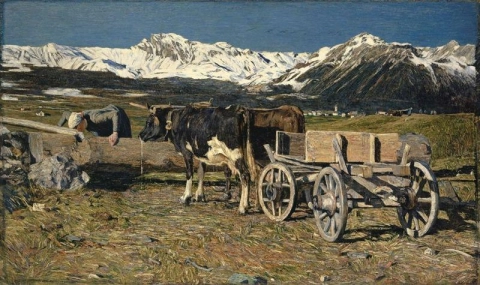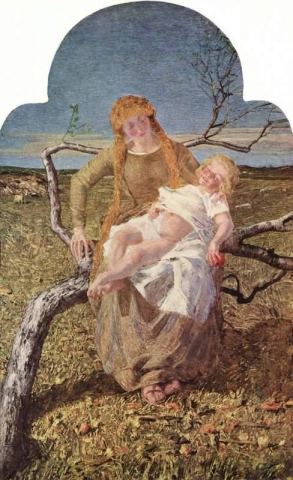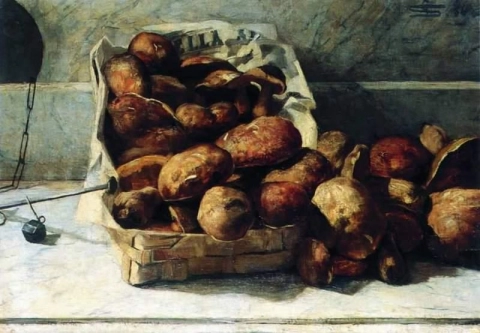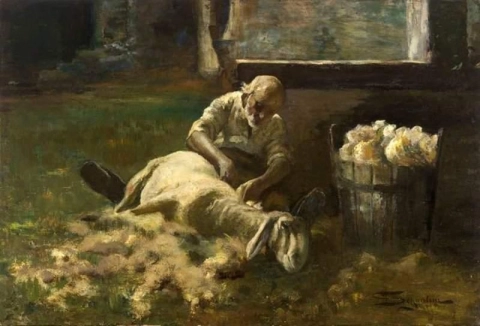

Hand painted reproductions of Giovanni Segantini
Giovanni Segantini: Master of Symbolist Landscape and Alpine Splendor
Giovanni Segantini (1858–1899) was an Italian painter celebrated for his luminous depictions of the Alpine landscape and his role in the Symbolist movement. Blending an intense reverence for nature with philosophical and spiritual themes, Segantini's art embodies a unique fusion of realism, symbolism, and divisionist technique. His paintings, often suffused with golden light and majestic mountain vistas, convey a profound sense of harmony between humanity and the natural world.
Early Life and Artistic Formation
Born in Arco, in the Austrian Empire (now Italy), Segantini faced a turbulent childhood marked by poverty and loss. Orphaned at a young age, he spent much of his early life in Milan, where he apprenticed with local artisans and developed a passion for art. Recognizing his talent, he enrolled at the Brera Academy of Fine Arts in Milan, where he received formal training and honed his skills in drawing and painting.
Segantini's early works reflected a fascination with the rural life and pastoral landscapes of Lombardy, depicting peasant scenes with a focus on light, atmosphere, and the emotional resonance of his subjects. His keen observational skills and ability to capture the interplay of light and shadow would become hallmarks of his mature style.
The Move to the Alps and the Birth of a Visionary Style
In the late 1880s, Segantini moved to the Swiss Alps, a decision that profoundly influenced his artistic trajectory. The majestic beauty of the mountains, the purity of the air, and the isolation of Alpine life resonated deeply with his philosophical outlook and inspired some of his most iconic works.
Segantini adopted the divisionist technique, a variation of pointillism that involved applying small, distinct strokes of color to create vibrant, light-filled compositions. Unlike traditional Impressionists, however, Segantini used this technique not merely to capture fleeting moments but to convey deeper symbolic and spiritual meanings. His paintings often juxtapose human figures with the vastness of nature, exploring themes of life, death, rebirth, and the eternal connection between humanity and the cosmos.
Themes and Symbolism
Segantini's art is imbued with symbolic elements that reflect his interest in metaphysical and philosophical questions. In works such as The Punishment of Lust (1891) and The Angel of Life (1894), he explores the cycles of life and death, the transience of earthly existence, and the possibility of transcendence.
His masterpiece, La Natura (Nature, 1896–1897), exemplifies his ability to merge naturalistic detail with allegorical content. The painting depicts a shepherdess in a serene Alpine landscape, bathed in golden light, symbolizing the harmony between humanity and the natural world. The recurring motifs of light, motherhood, and the cycles of nature reflect Segantini’s belief in the unity of all living beings and the spiritual power of the natural environment.
Legacy and Influence
Despite his untimely death at the age of 41, Giovanni Segantini left an indelible mark on the art world. His innovative use of light and color, combined with his visionary approach to landscape painting, positioned him as a leading figure in the Symbolist movement and a precursor to modernist tendencies in art.
Segantini's works were celebrated internationally during his lifetime, and he exhibited at prestigious venues, including the Venice Biennale and the Paris Exposition Universelle. Today, his paintings are housed in major museums and galleries, such as the Kunstmuseum St. Gallen, the Segantini Museum in St. Moritz, and the Galleria d'Arte Moderna in Milan.
His influence can be seen in the works of later Symbolist and divisionist painters, as well as in the broader development of landscape painting in the 20th century. Segantini’s ability to capture the sublime beauty of nature and imbue it with spiritual significance continues to inspire artists and art lovers alike.
Own a Handcrafted Oil Painting Reproduction of Giovanni Segantini’s Art
Bring the ethereal beauty of Giovanni Segantini’s landscapes into your home with a handmade oil painting reproduction. Our artisans meticulously recreate his intricate brushwork, luminous color palette, and symbolic themes, allowing you to experience the majesty of the Alpine world and the profound spiritual depth of his art. Transform your space with a timeless masterpiece that celebrates the legacy of one of Italy’s most visionary painters.
Imagine owning an original work of art by Giovanni Segantini, one of the greatest artists in history. At POD we offer you the opportunity to make this dream come true. We reproduce Giovanni Segantini's works down to the smallest detail, so you can enjoy them in your own home.
Our reproductions are made by experienced artists who use the best materials and techniques. We are dedicated to providing you with the highest quality works of art, which will bring joy and inspiration to your family for generations.






































